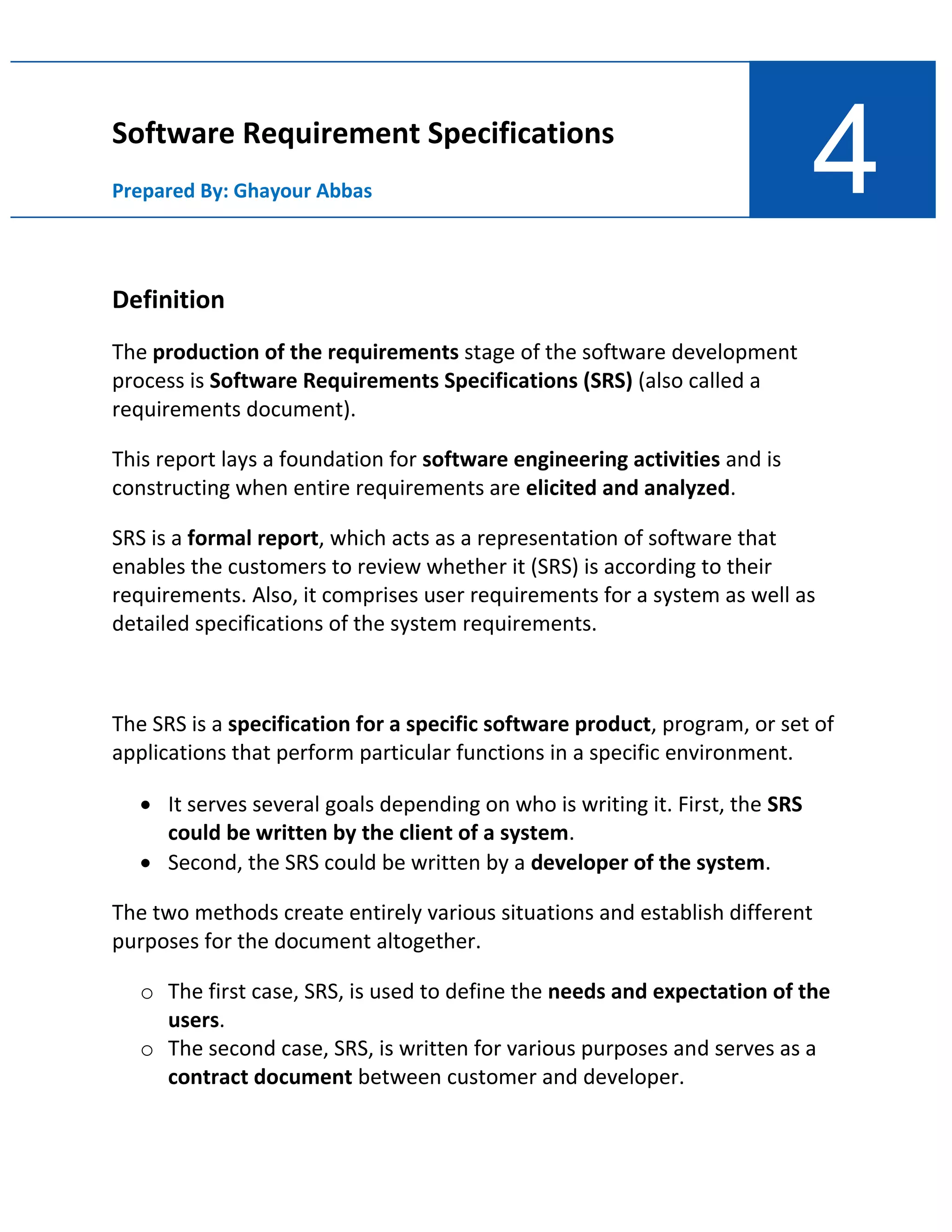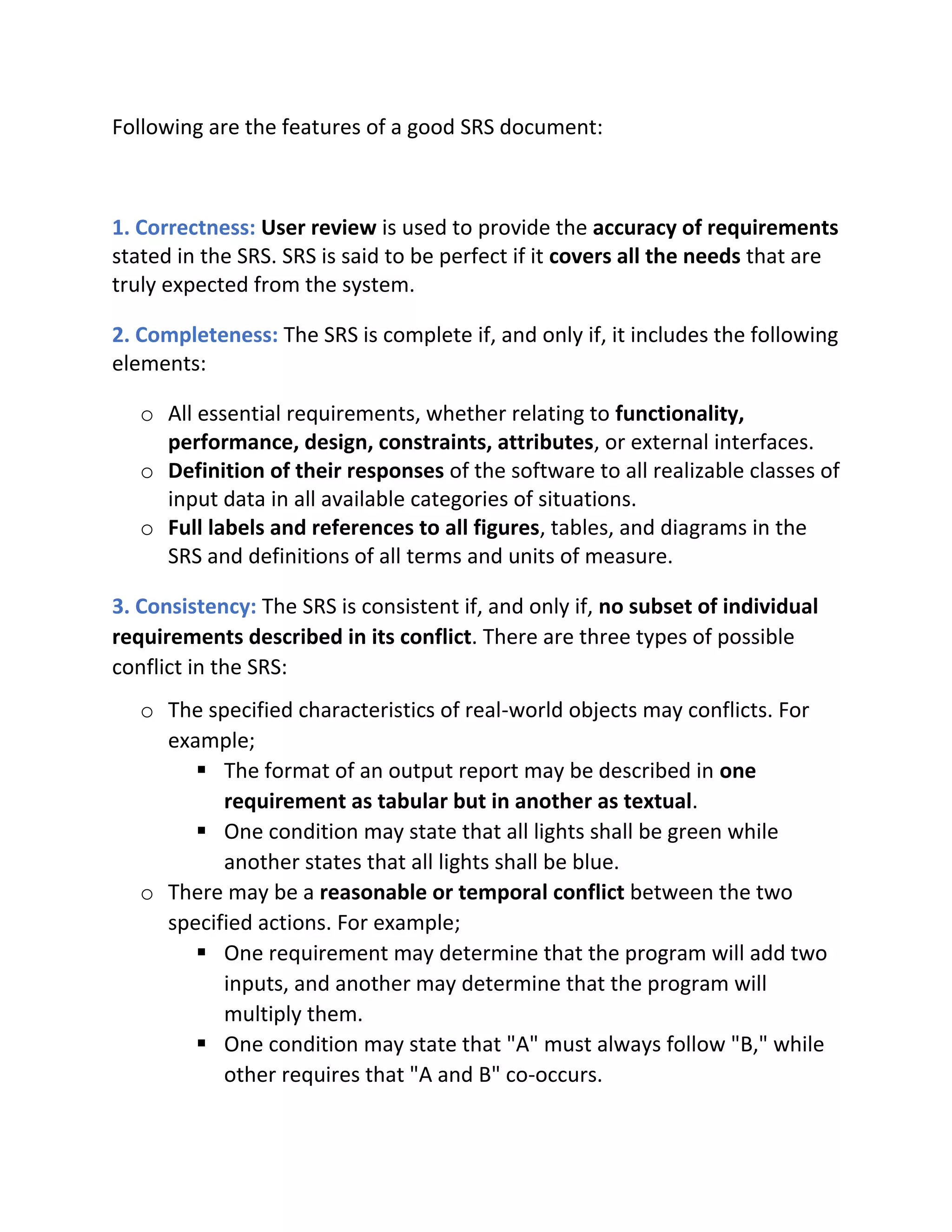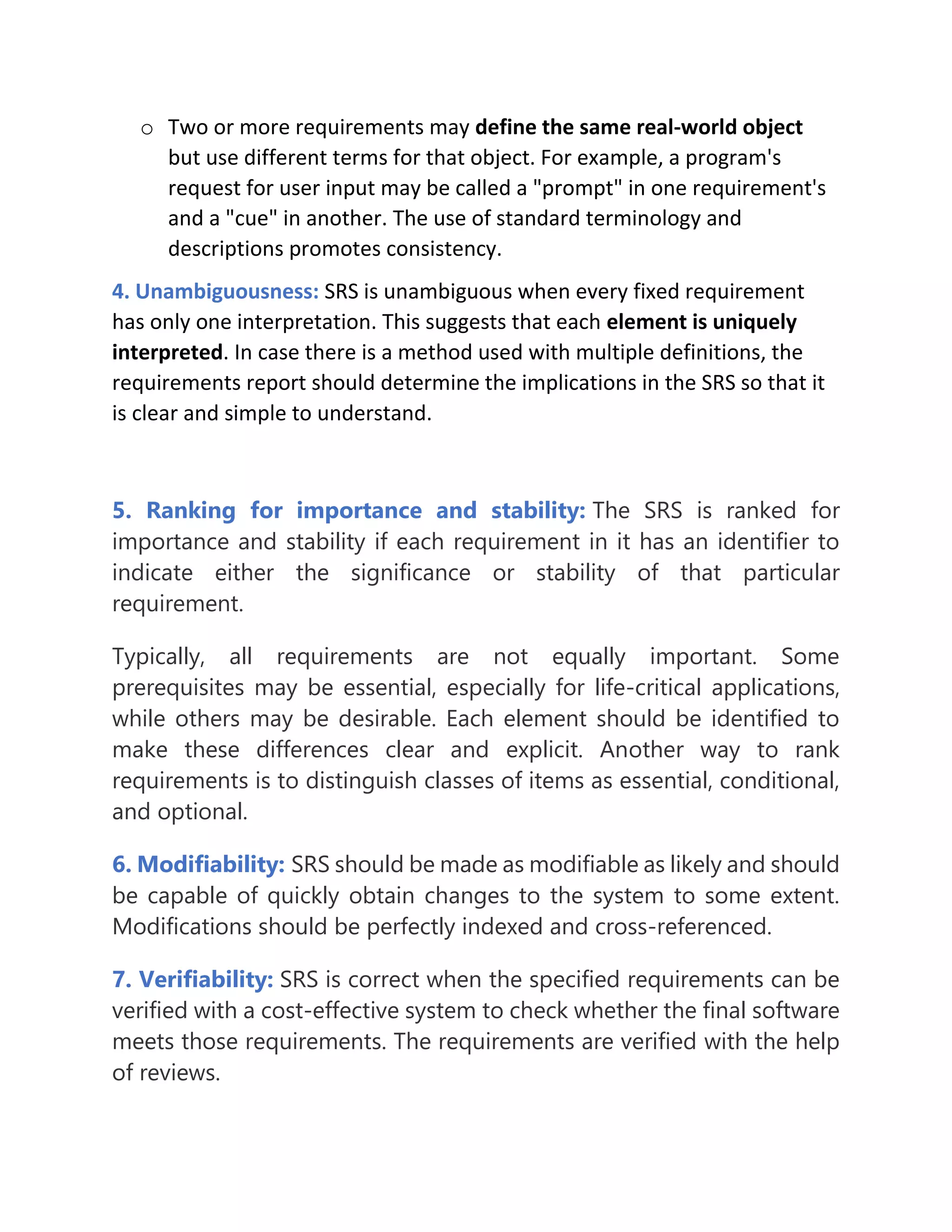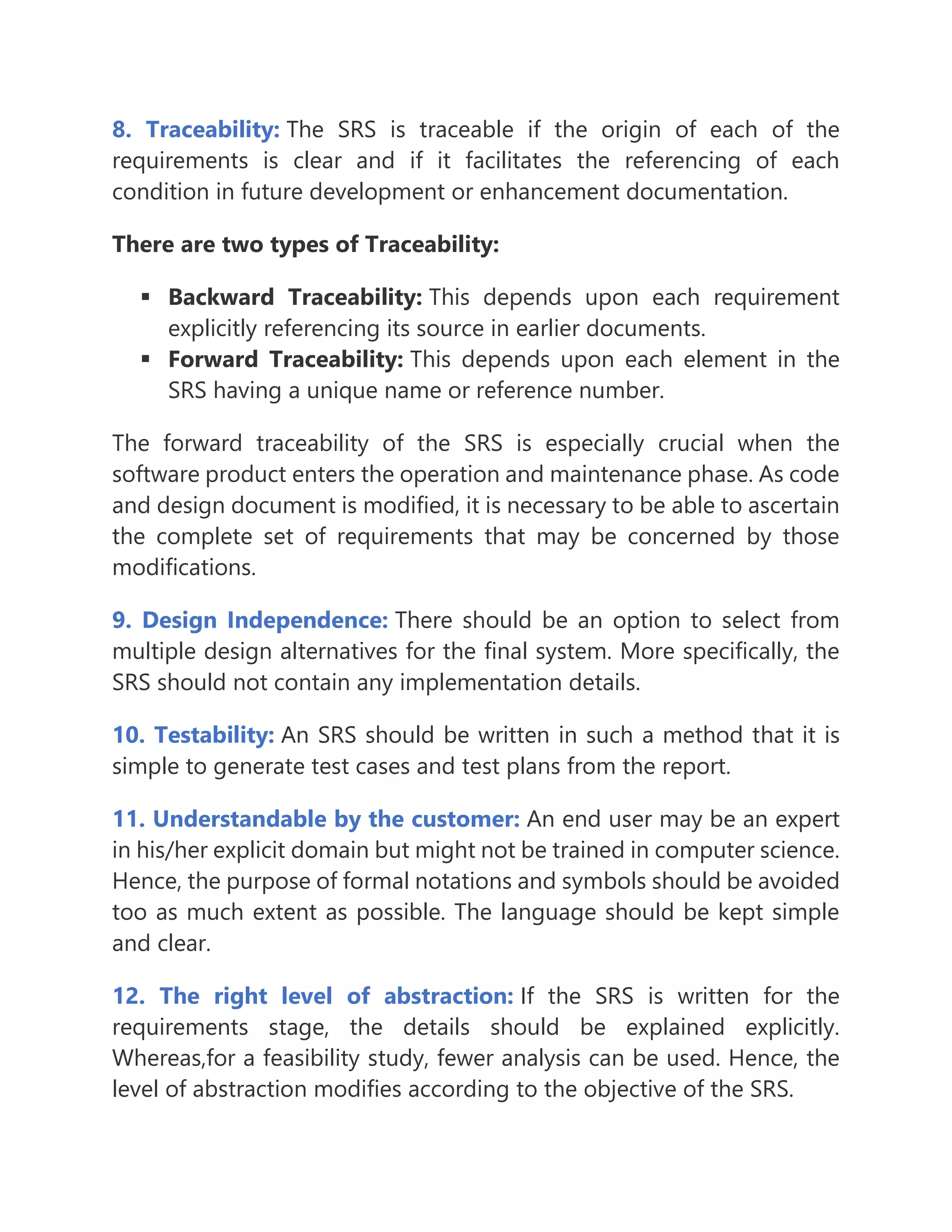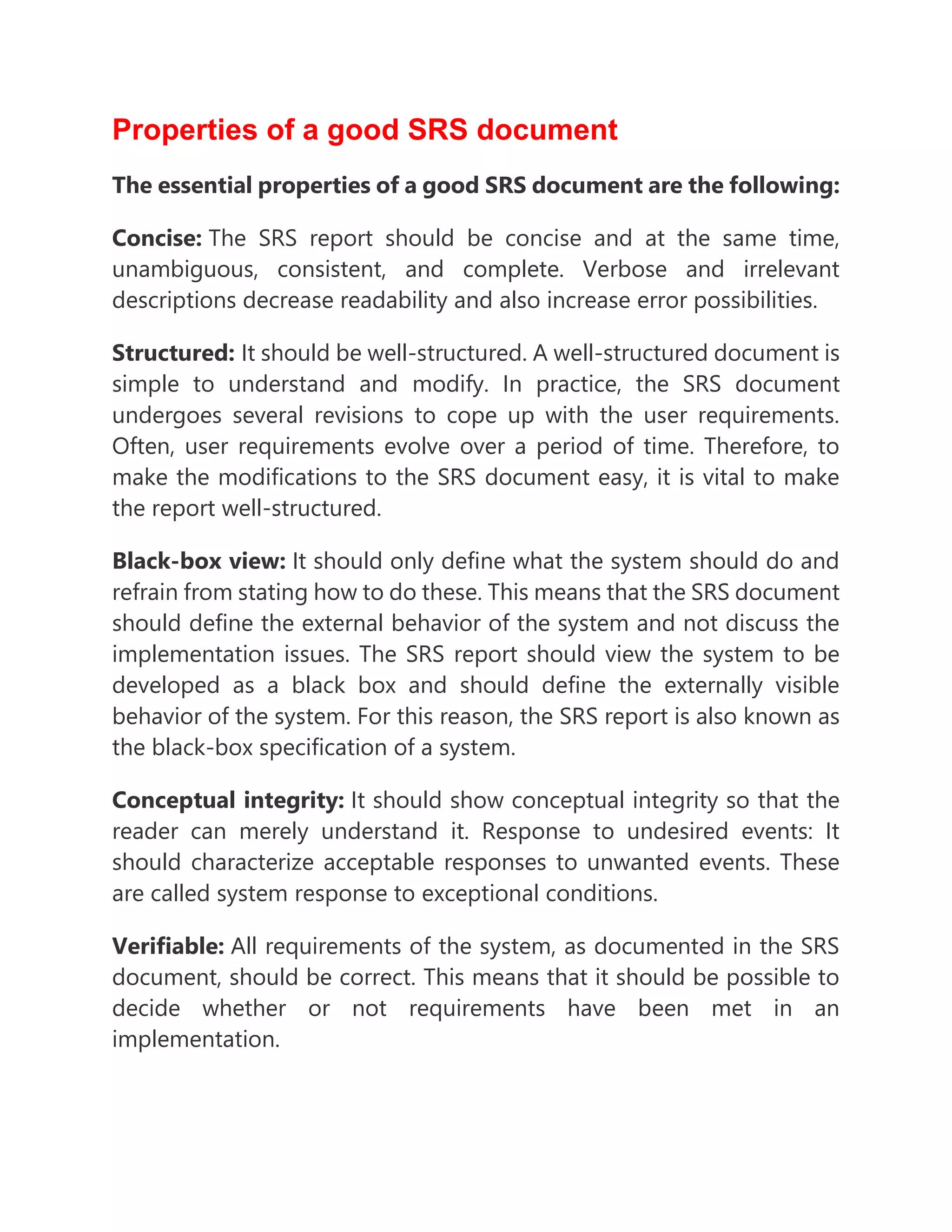The document defines a Software Requirements Specification (SRS) as a formal report that lays the foundation for software engineering activities by eliciting and analyzing all system requirements. An SRS should have several key characteristics, including being correct, complete, consistent, unambiguous, modifiable, verifiable, and traceable. It should also be structured, concise, written from a black-box perspective, demonstrate conceptual integrity, and contain requirements that can be verified. The purpose of an SRS is to formally represent the desired software system and allow customers to review that the system meets their needs.
